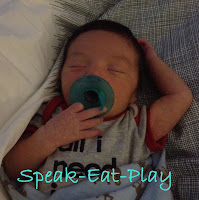What you may not know about a pacifier
by Karina Gonzalez, MS CCC-SLP
What is my biggest pet peeve? Seeing a toddler with a pacifier! There have even been times that I have seen 4 year olds with a paci in their mouths. Parents if this is your child, please don’t be offended, instead keep reading, I’m here to help. I’m sure every speech-language pathologist feels the same about the dreaded binky, tete, boopy, chupi, mimi, paci, sucky, etc. This innocent looking device is a speech development’s worst nightmare. Well I might be exaggerating a little, but I’m trying to prove a point. Don’t get me wrong, a pacifier serves a purpose in an infant’s life. It helps with soothing, calming and comforting babies, as well as quenching the instinctive desire to suck. This is a behavior that develops in utero, prenatal imaging has shown babies sucking their thumb or fingers before birth, so it’s only natural for your baby to want to suck. Another advantage of a pacifier is that it helps promote the sucking reflex in premature infants. Pacifiers have also been linked reducing the risk of sudden infant death syndrome (SIDS).
However, these benefits apply only to early infancy, as your baby grows the benefits decrease and they begin to wreak havoc in your baby’s mouth including…
However, these benefits apply only to early infancy, as your baby grows the benefits decrease and they begin to wreak havoc in your baby’s mouth including…







